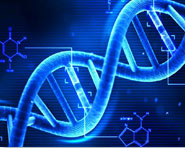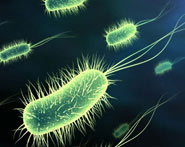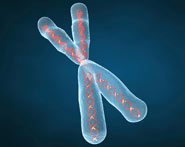


 النبات
النبات
 الحيوان
الحيوان
 الأحياء المجهرية
الأحياء المجهرية
 علم الأمراض
علم الأمراض
 التقانة الإحيائية
التقانة الإحيائية
 التقنية الحيوية المكروبية
التقنية الحيوية المكروبية
 التقنية الحياتية النانوية
التقنية الحياتية النانوية
 علم الأجنة
علم الأجنة
 الأحياء الجزيئي
الأحياء الجزيئي
 علم وظائف الأعضاء
علم وظائف الأعضاء
 الغدد
الغدد
 المضادات الحيوية
المضادات الحيوية|
Read More
Date: 8-11-2015
Date: 8-11-2015
Date: 2025-01-15
|
Antibodies coat microbes and promote their ingestion by phagocytes (Fig. 1). The process of coating particles for subsequent phagocytosis is called opsonization, and the molecules that coat microbes and enhance their phagocytosis are called opsonins. When several IgG molecules bind to a microbe, an array of their Fc regions projects away from the microbial surface. If the antibodies belong to certain isotypes (IgG1 and IgG3 in humans), their Fc regions bind to a high-affinity receptor for the Fc regions of γ heavy chains, called FcγRI (CD64), which is expressed on neutrophils and macrophages (Fig. 2). The phagocyte extends its plasma membrane around the attached microbe and ingests the microbe into a vesicle called a phagosome, which fuses with lysosomes. The binding of antibody Fc tails to FcγRI also activates the phagocytes, because the FcγRI contains a signaling chain that triggers numerous biochemical pathways in the phagocytes. Large amounts of reactive oxygen species, nitric oxide, and proteolytic enzymes are produced in the lysosomes of the activated neutrophils and macrophages, all of which contribute to the destruction of the ingested microbe.
Fig1. Antibody-mediated opsonization and phagocytosis of microbes. Antibodies of certain IgG sub classes (IgG1 and IgG3) bind to microbes and are then recognized by Fc receptors on phagocytes. Signals from the Fc receptors promote the phagocytosis of the opsonized microbes and activate the phagocytes to destroy these microbes. Ig, Immunoglobulin.
Fig2. Fc receptors. The cellular distribution and functions of different types of human Fc receptors. DCs, Dendritic cells; Ig, immunoglobulin; NK, natural killer.
Antibody-mediated phagocytosis is the major mechanism of defense against encapsulated bacteria, such as pneumococci. The polysaccharide-rich capsules of these bacteria protect the organisms from phagocytosis in the absence of antibody, but opsonization by antibody promotes phagocytosis and destruction of the bacteria. The spleen contains large numbers of phagocytes and is an important site of phagocytic clearance of opsonized bacteria. This is why patients who have undergone splenectomy are susceptible to disseminated infections by encapsulated bacteria.
One of the Fcγ receptors, FcγRIIB, does not mediate effector functions of antibodies but rather shuts down antibody production and reduces inflammation. The role of FcγRIIB in feedback inhibition of B cell activation was discussed in Chapter 7 (see Fig. 7.16). FcγRIIB also inhibits activation of macrophages and dendritic cells and may thus serve an antiinflammatory function as well. Pooled IgG from healthy donors is given intravenously to treat various inflammatory diseases. This preparation is called intravenous immune globulin (IVIG), and its beneficial effect in these diseases is partly mediated by its binding to FcγRIIB on various cells.



|
|
|
|
لشعر لامع وكثيف وصحي.. وصفة تكشف "سرا آسيويا" قديما
|
|
|
|
|
|
|
كيفية الحفاظ على فرامل السيارة لضمان الأمان المثالي
|
|
|
|
|
|
|
العتبة العباسية المقدسة تجري القرعة الخاصة بأداء مناسك الحج لمنتسبيها
|
|
|